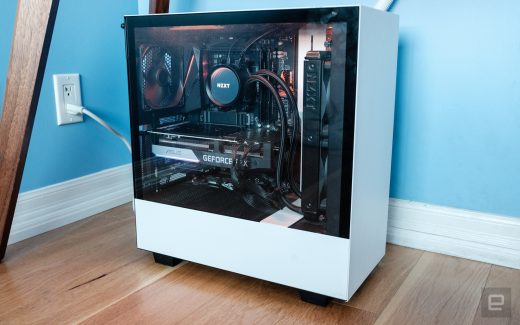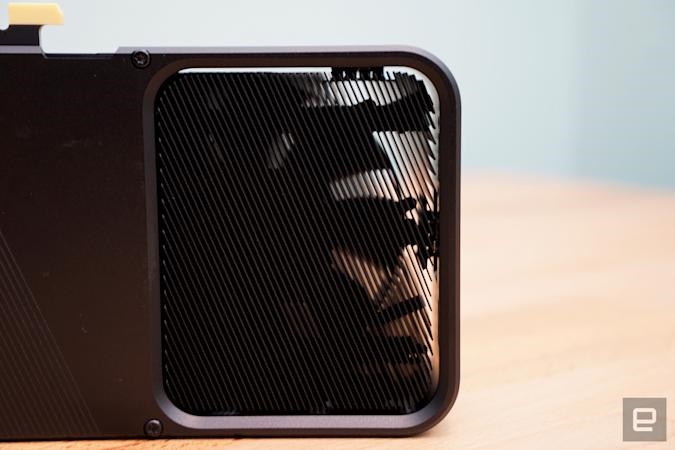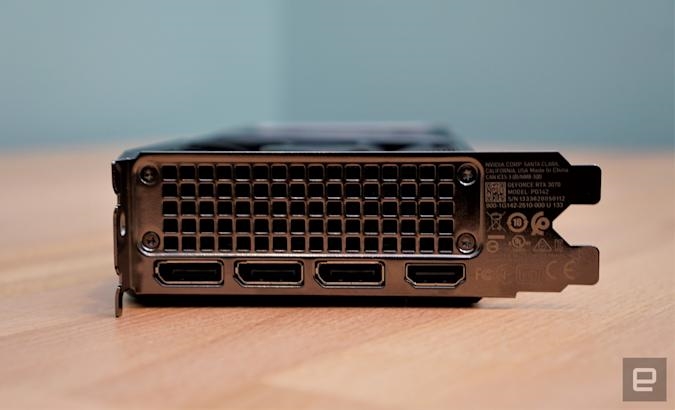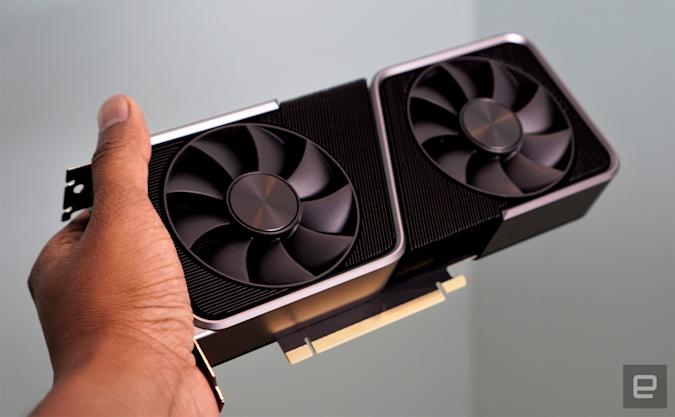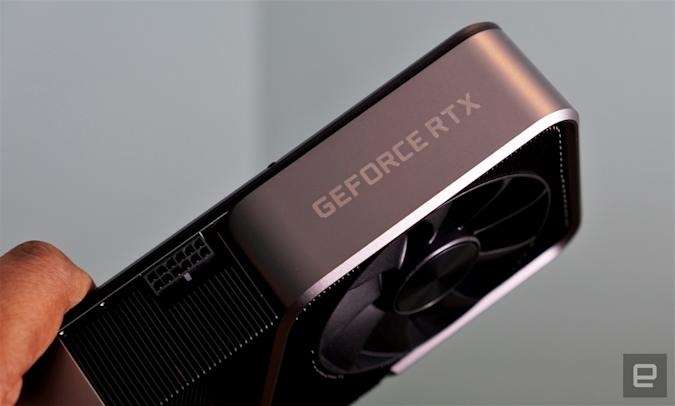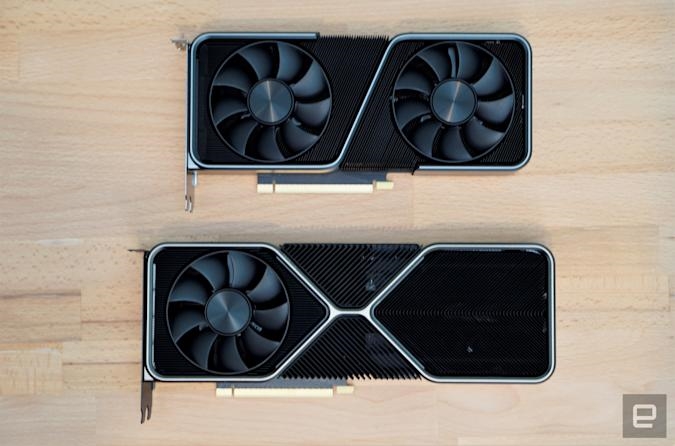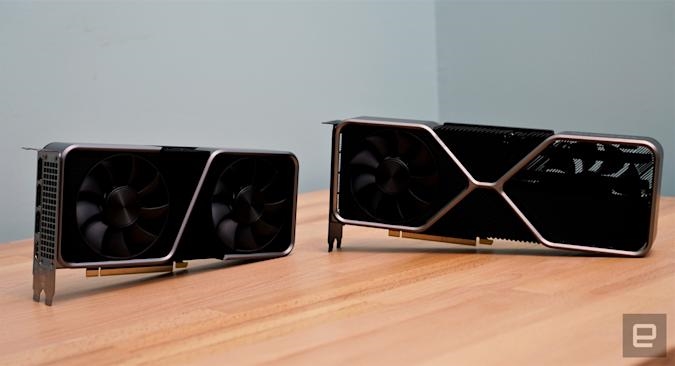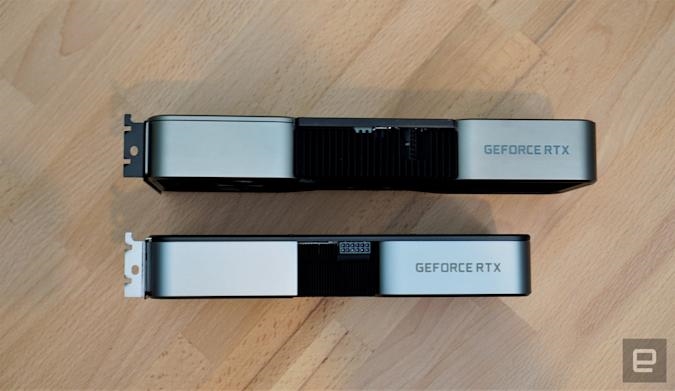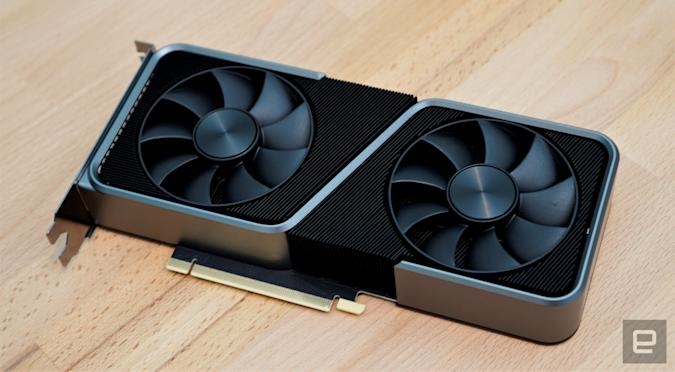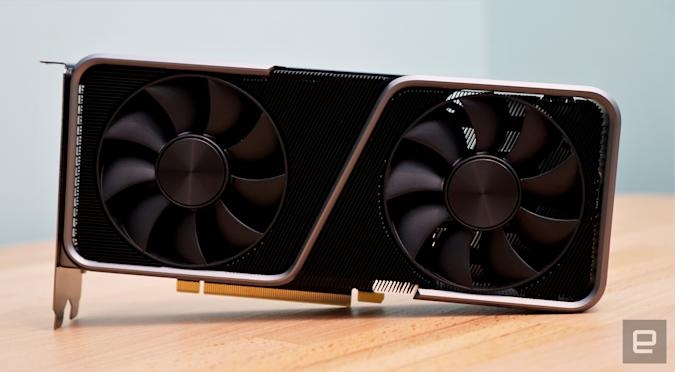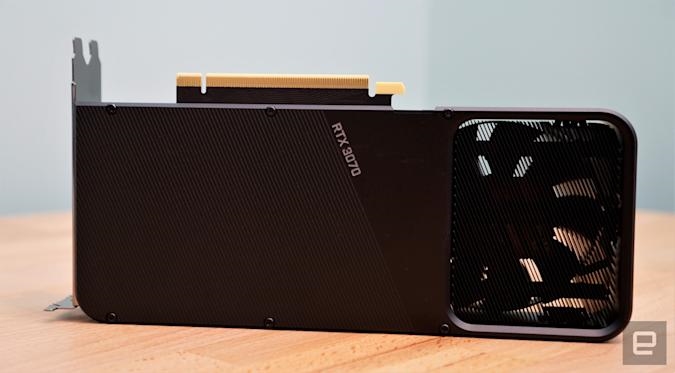What we bought: An NVIDIA RTX 3070, two years late
NVIDIA RTX 3070 review: A hot rod GPU for the practical gamer
It’s basically a $500 2080 Ti.

If you’ve been pining for NVIDIA’s 2080 Ti for the past few years, but never found a way to justify spending $1,000 on a graphics card, the RTX 3070 is for you. At $499, it tied the 2080 Ti during most of our benchmark testing. And for many, the 3070 will be a better buy than the $699 RTX 3080. Consider it the practical gamer’s GPU hot rod. It’ll deliver excellent performance for 240Hz monitors and 4K gaming alike.
Gallery: NVIDIA RTX 3070
The 3070’s design won’t surprise you too much if you’ve seen the 3080. It has the same dual fan design, with one exhausting air out of the side of your case, and another pulling air through the card and towards your top fans. Raised metal fins also help with the heat dissipation. The 3070 is several inches shorter than the 3080, which makes it easier to fit in tighter cases. Once again, NVIDIA also used a small 12-pin power connector to save a bit of PCB space.( A converter cable for a standard 8-pin power cable is in the box.) Around the back, there are three DisplayPort connections and one HDMI 2.1 port.
NVIDIA GeForce RTX 3070
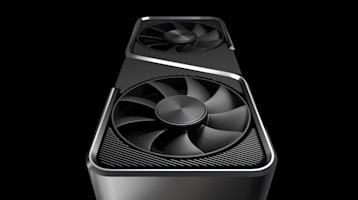
Pros
- Just as fast as the 2080 Ti
- Solid ray tracing performance
- Excellent cooling under load
Cons
- Fans can get loud
Let’s get to what really matters about the RTX 3070: specs and performance. It’s powered by 5,888 CUDA cores, 184 tensor AI cores, and 46 RT cores for ray tracing. In comparison, the RTX 2070 featured 2,304 CUDA cores and 36 RT cores. The older card did have more tensor cores — 288 versus the 3070’s 184 — but NVIDIA says its newer cores are faster and more efficient. Notably, the 3070’s hardware even beats out the RTX 2080 Ti on paper, which had 4,352 CUDA cores. That’s progress: Now a mid-range card can outdo NVIDIA’s flagship from two years ago. The only major downside with the 3070 is that it has 8GB of RAM compared to the 2080 Ti’s 11GB.
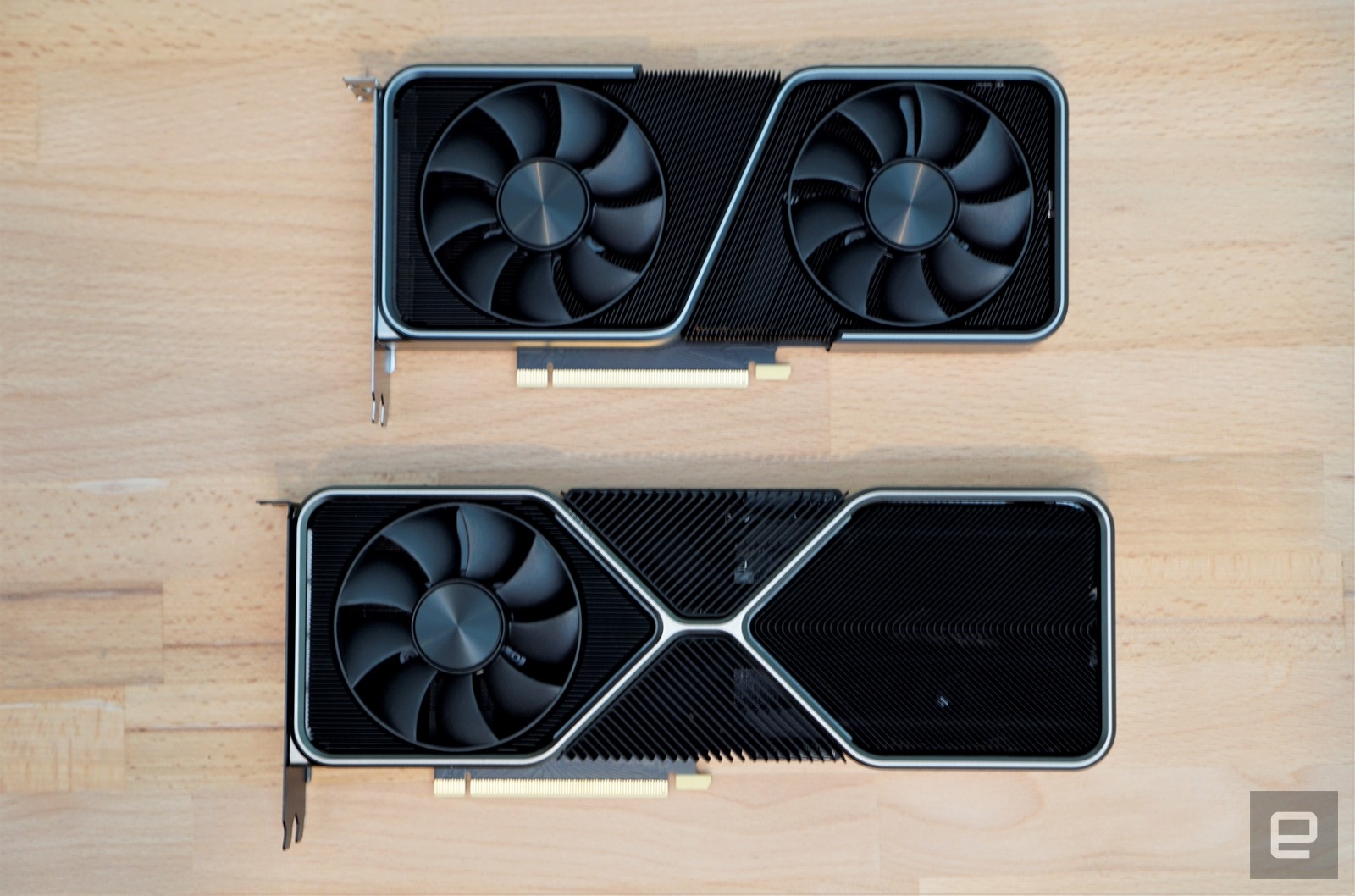
NVIDIA claims the RTX 3070 is capable of performing 20.3 shader teraflops and 39.7 ray tracing teraflops, both of which are a measurement of its overall computing capability. In comparison, it says the 2070 can hit 7.9 shader TFLOPs and 23.8 RT TFLOPs. Those numbers sound like an impressive leap for NVIDIA’s new GPU, but as we explained when NVIDIA launched its 3000-series GPUs, TFLOP numbers are increasingly meaningless. Instead, the big takeaway is that NVIDIA has reworked how its GPUs handle integer and floating point math, which could lead to some genuine performance improvements. But don’t expect a card with twice as much TFLOP potential to be twice as fast overall.
|
|
Shadow of the Tomb Raider Benchmark |
Hitman 2 Benchmark |
Destiny 2 |
Luxmark Luxball HDR |
|
|---|---|---|---|---|---|
|
RTX 3070 |
6,061 |
51 FPS |
70 FPS |
85-95 FPS |
49,006 |
|
RTX 3080 |
7,371 |
82 FPS |
98 FPS |
130-140 FPS |
68,701 |
|
RTX 2080 Ti |
5,906 |
52 FPS |
71 FPS |
90-110 FPS |
40,331 |
|
GTX 1080 |
3,227 |
N/A |
N/A |
65-75 |
12,153 |
All games tested in 4K/HDR with the highest graphics quality settings and ray tracing (where available), on a rig powered by an Intel Core i7-8700K and 32GB of RAM.
While I expected the RTX 3070 to be comparable to the 2080 Ti, I was surprised to find that it practically mirrored the older card in our benchmarks. Their results in 3DMark TimeSpy Extreme, Hitman 2, Destiny 2 and Shadow of the Tomb Raider are so close I’d just call them identical. The 3070 did leap ahead in some cases, which aren’t in our benchmark table. It scored 107 FPS in the Shadow of the Tomb Raider benchmark in 1,440p, compared to 79 FPS on the 2080 Ti. The new card also scored significantly higher in the Luxmark HDR benchmark, which uses OpenCL to test its GPU computing potential. That’ll make the 3070 even more tempting to media producers who need some encoding help.
The RTX 3070 also stayed in step with the 2080 Ti when it came to ray tracing performance. Minecraft RTX reached the same 70 to 75 FPS in 4K with all of the graphical flourishes turned on. And the 3DMark Port Royal demo scores were only a few hundred points apart (with the 2080 Ti keeping a slight edge). If ray tracing is the most important thing for your next upgrade, it may be worth saving up for the 3080, which offered dramatically better performance across the board.
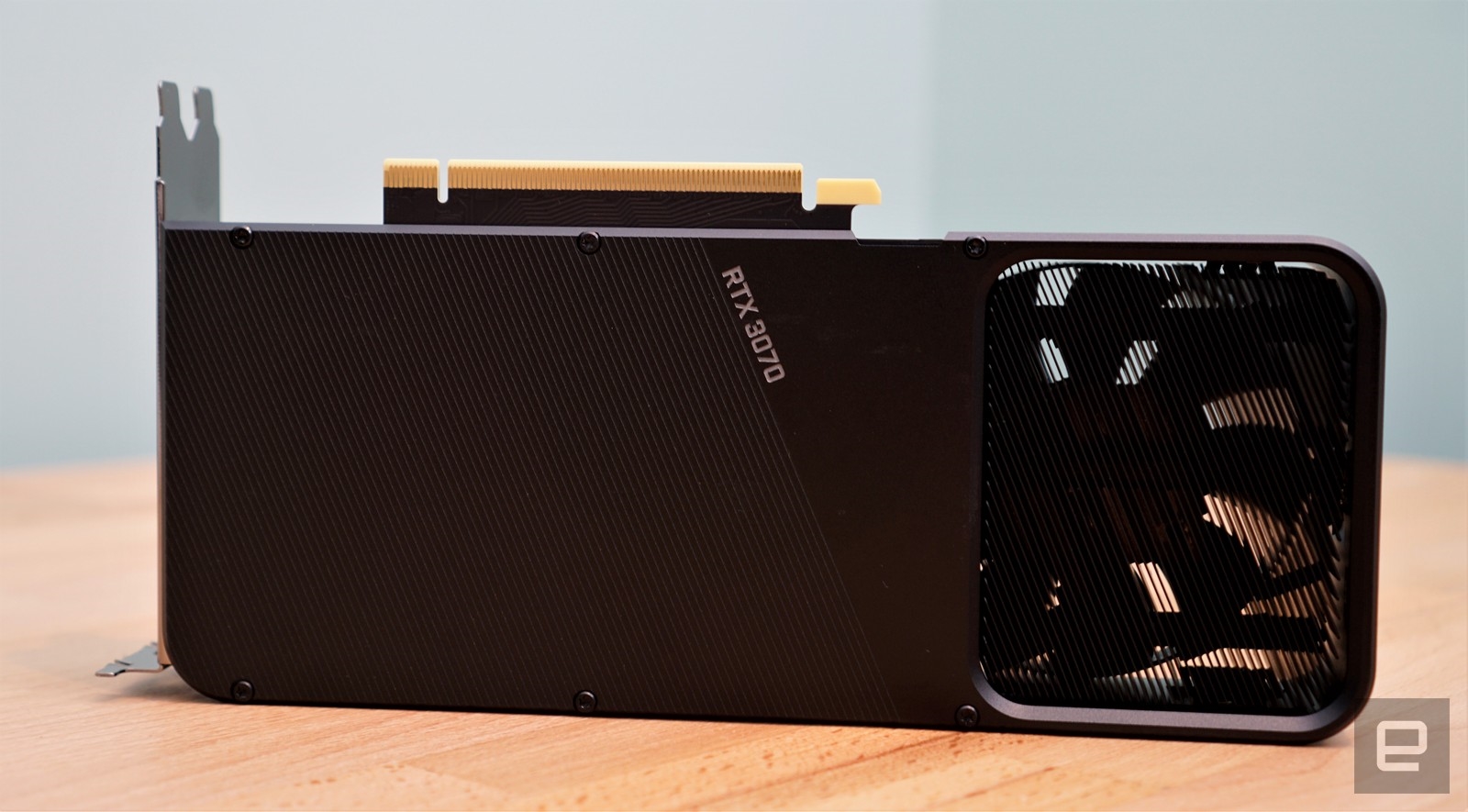
Even though the 3070 features the same cooler design as the 3080, I found it to be noisier overall. I didn’t have a sound meter handy to grab exact figures, but during my testing it emitted a high-pitched whining noise while it was idle, whereas the 3080 was virtually silent. The 3070 also sounded like a jet getting ready to take off when it was under load. While the 3080 could get a bit noisy when it was stressed, it wasn’t nearly as loud. NVIDIA reps say the 3070 should be performing silently, so my noise issues could be some sort of bug. At least the cooling mechanism did its job though: The 3070 ran at a relatively chill 40 celsius while idling, and 76C under load. In comparison, the 2080 Ti reached up to 86C during benchmarks and gameplay.
In short, the RTX 3070 is a $499 card that’s doing the work of a two-year old $999 GPU. That’s a huge accomplishment, especially when the RTX 2070 was still bested by the GTX 1080 Ti when it was released. NVIDIA claims the RTX 3000 GPUs are its biggest generational leap ever, and that’s evident with the 3070. Still, I’d still suggest waiting to see how AMD’s next-generation Radeon 6000 GPUs look when they’re announced on October 28th. If you’re an NVIDIA die-hard though, and you don’t see yourself running a rival card anytime soon, the RTX 3070 is a no-brainer upgrade.
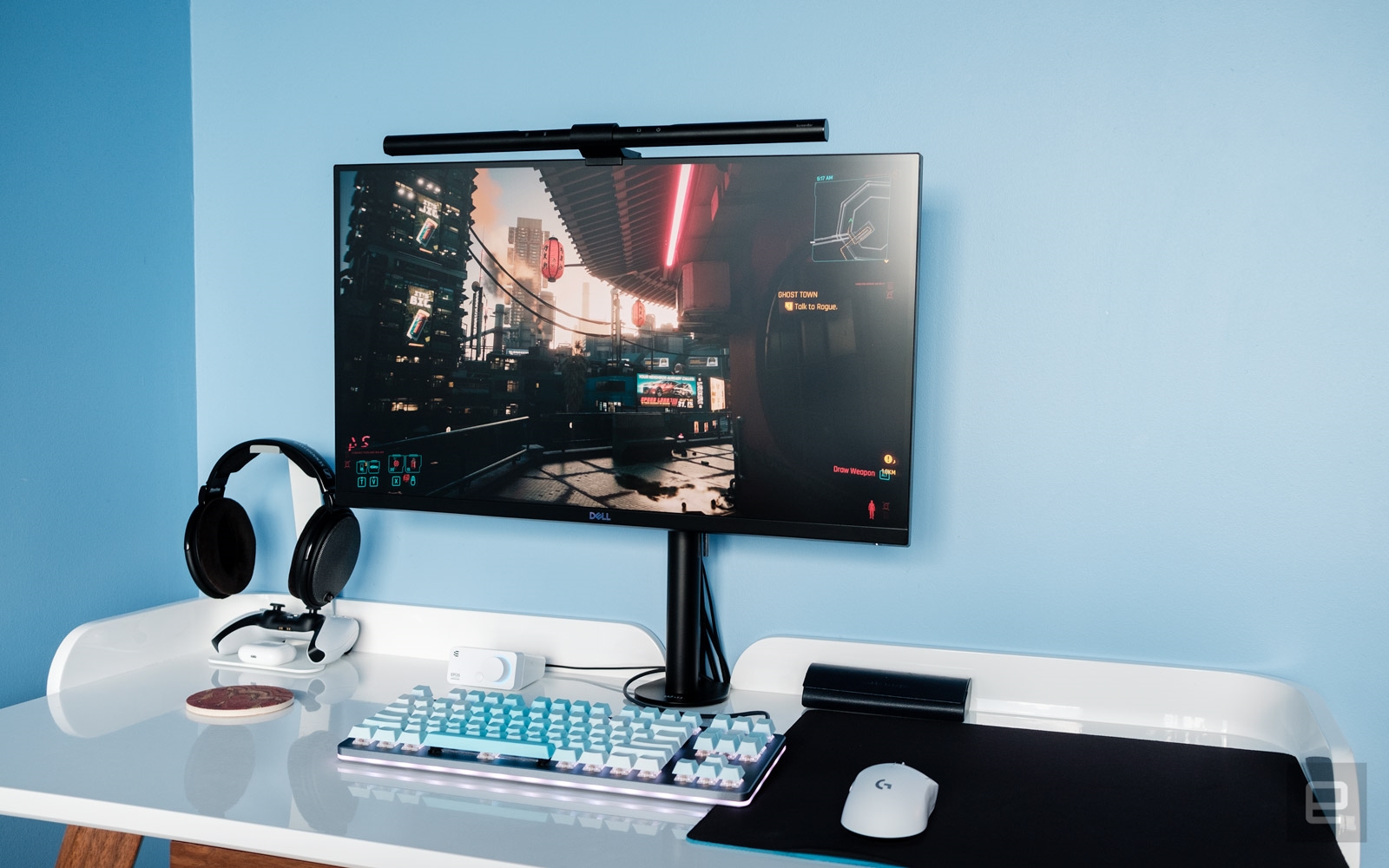
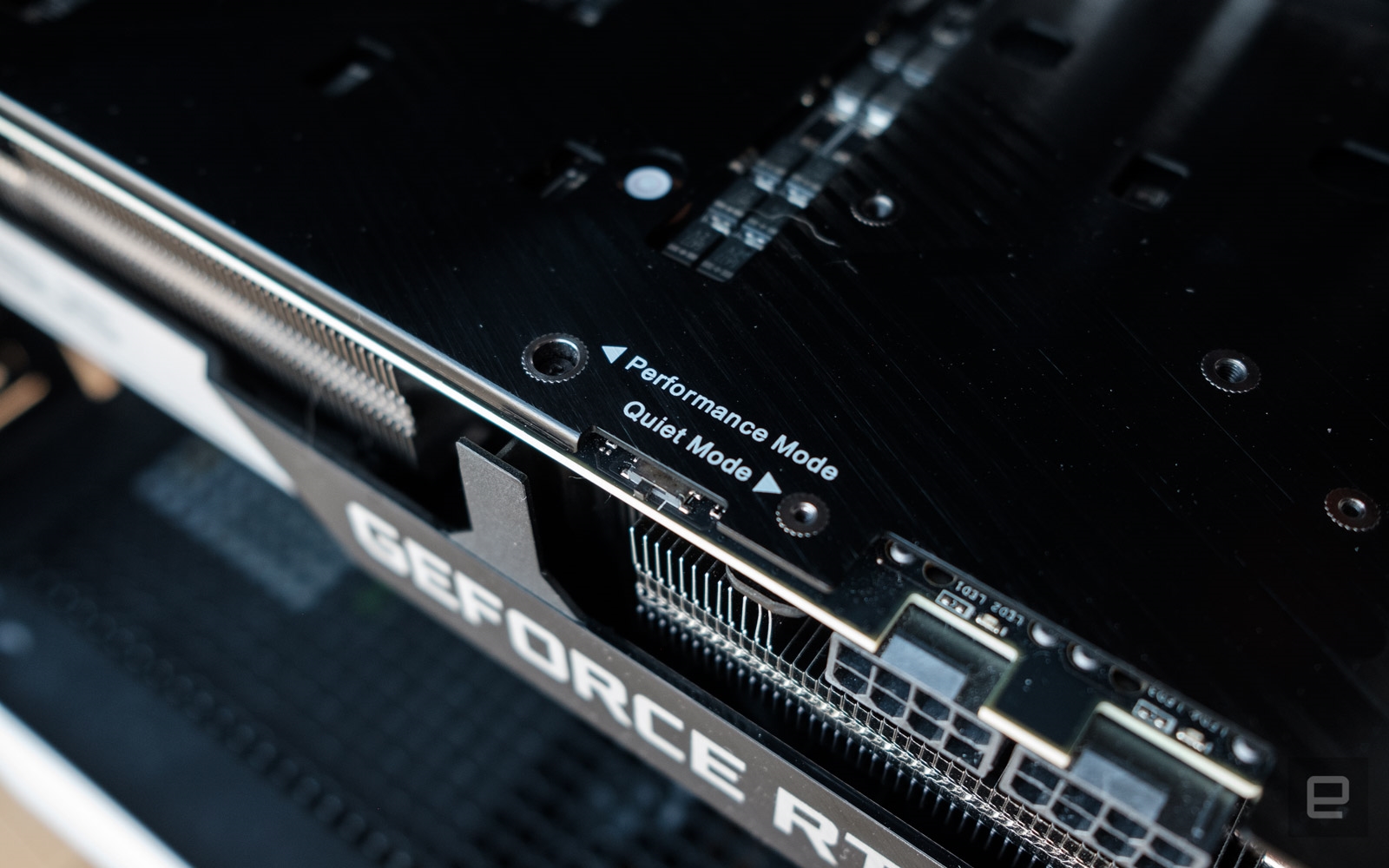
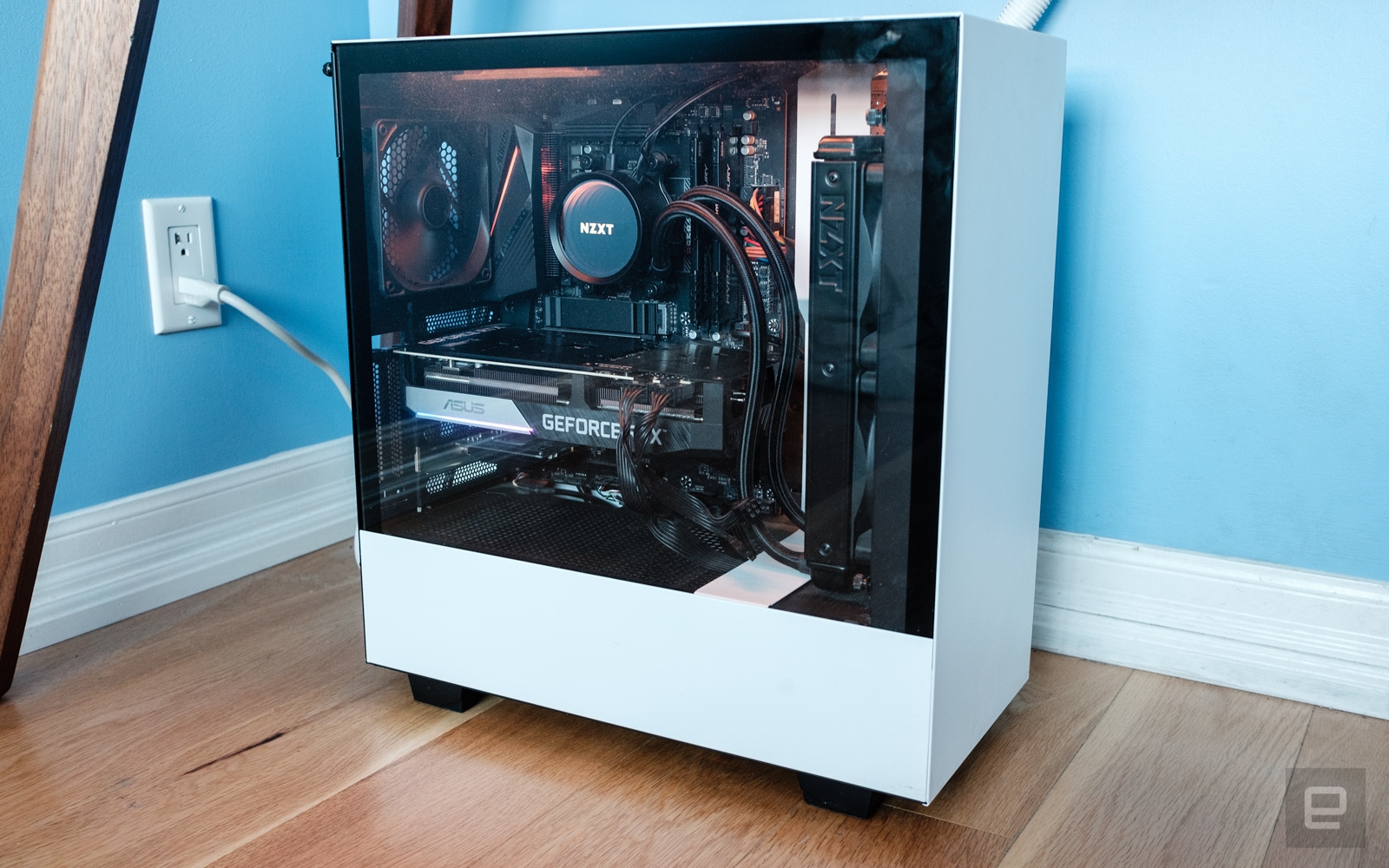
(48)

